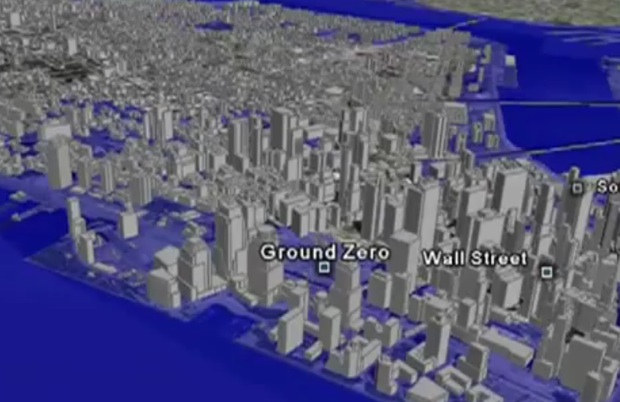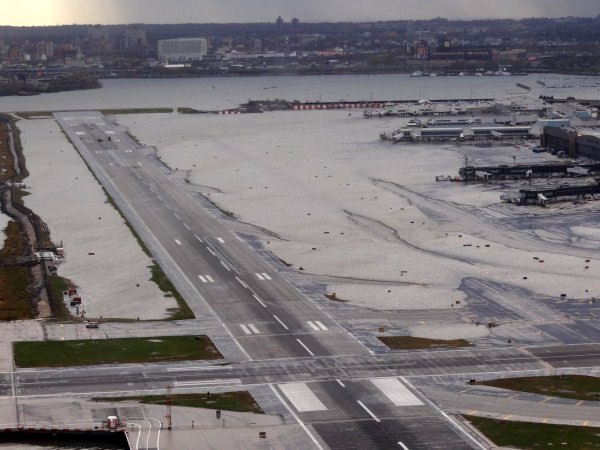Superstorm Sandy highlights vulnerabilities –
Ramtha: East Coast in peril

Photo credit: PEW Foundation
Lower Manhattan Flooding
– “Climate issue heats up after Sandy”
“The climate change issue has been virtually a non-issue during the presidential campaign — but it’s primed to take a higher profile after the elections, in part due to Hurricane Sandy’s horrific aftermath. At least that’s the view of Shawn Lawrence Otto, one of the founders of ScienceDebate.org and author of ‘Fool Me Twice: Fighting the Assault on Science of America,'” quoting Alan Boyle on NBC News.
Read more
– “Climate change predictions foresaw Hurricane Sandy scenario for New York City”
“Hurricane Sandy’s stunning storm surge practically marooned the Big Apple. But for years, forecasters saw this as a possibility in both the present and more distant future, quoting Don Lipman in the Washington Post.
Read more
– “Experts warn of superstorm era to come”
“Superstorm Sandy was no freak, say experts, but rather a hint of a coming era when millions of Americans will struggle to survive killer weather.
They’re telling us we shouldn’t be surprised that this 900-mile-wide monster marched up the East Coast this week paralyzing cities and claiming scores of lives.
‘It’s a foretaste of things to come,’ Princeton University professor Michael Oppenheimer told CNN. ‘Bigger storms and higher sea levels’ will pile on to create a “growing threat” in the coming decades.
And New York, he warned, ‘is highly vulnerable,'” by Tim Lister, CNN.
Read more
– Pictures of Superstorm Sandy
Read more from UK’s Daily Mail.
Click here for more from UK’s Daily Mail.
– “Disaster-proofed homeowners aren’t worried about Sandy”
“Sometimes called “preppers”, this particular kind of safety-conscious homeowner is becoming more and more prevalent in today’s anxious and storm-tossed world,” quoting Chris Taylor, a Reuters contributor.
Read more
– UPDATE: June 11, 2013
“Report: Fourth of NYC Could be Flood Zone by 2050s”
“With local waters a foot to 2½ feet higher than they are today, 8 percent of the city’s coastline could see flooding just from high tides”
By Jennifer Peltz, WNBC-TV 4, New York.
Read more
– UPDATE: September 19, 2014
NY Gov. Andrew Cuomo on Hurricane Sandy’s aftermath:
“I believe we should be prepared for it to happen again.
I don’t believe it was the last time.”
From NBC News.
Read more

Photo credit: Washington Post
New York’s LaGuardia Airport Flooding
– “New Evidence Shows Power of East Coast Earthquakes”
“Earthquake shaking in the eastern United States can travel much farther and cause damage over larger areas than previously thought.
U.S. Geological Survey scientists found that last year’s magnitude 5.8 earthquake in Virginia triggered landslides at distances four times farther—and over an area 20 times larger—than previous research has shown,” quoting the USGS.
Read more
– “What Could Disappear”
“Maps show coastal and low-lying areas that would be permanently flooded, without engineered protection, in three levels of higher seas,” quoting the New York Times.
Read more
– UPDATE: December 24, 2012
“Nuclear Power Plant Flood Risk: Sandy Was Just a Warm-Up”
“As Hurricane Sandy approached the East Coast late last October, more than a dozen nuclear power plants from North Carolina stretching up to New England were in its wide-ranging path. On Oct. 29, the night that the eye of the storm made landfall near Atlantic City, New Jersey, five nuclear plants were forced to either reduce power or make emergency shutdowns.
The most serious event was at the Oyster Creek Generating Station located in Lacey Township, near Barnegat Bay, New Jersey, about 40 miles north of Atlantic City. Amid 75-mile-an-hour winds, power to the region was knocked out, including at the Oyster Creek plant, just before 7 p.m. The plant’s backup diesel generators kicked on to keep its crucial cooling equipment functioning. Nevertheless, by 9 p.m. the plant’s pumps were facing another danger: rising floodwaters. Nuclear Regulatory Commission (NRC) spokesperson Neil Sheehan said that Sandy brought a surge of 7.4 feet to Oyster Creek. The plant is obligated to prepare for the consequences of flooding at 8.5 feet, he said, and, at 9.0 or 9.5 feet — Sheehan wasn’t sure — the plant’s pump motors would begin to be flooded.
The storm surge led the plant to declare an “Alert” — the second step in theNRC’s four-tiered emergency action system,” quoting Heather Rogers, Remapping Debate.
Read more
– UPDATE: January 28, 2013
“Preliminary FEMA flood zone maps add 35,000 NYC buildings to flood zones”
“Some 35,000 buildings and homes have been added to flood zones in parts of New York City, according to preliminary maps released Monday by the Federal Emergency Management Agency. More of these maps will be released in late February for Manhattan and other parts of city where the data is still being analyzed.
The numbers emerged after the release earlier in the day of FEMA’s advisory flood maps for parts of the city, increasing the areas falling into 100-year flood zones or areas with the potential for destructive high speed waves along coastlines, said agency spokesman Dan Watson. More maps will be released for other parts of the city, including Manhattan, in late February, he said,” by Miranda Leitsinger, Staff Writer, NBC News.
Read more
– UPDATE: September 5, 2013
“Rising Seas”
“As the planet warms, the sea rises. Coastlines flood. What will we protect? What will we abandon? How will we face the danger of rising seas?”
By Tim Folger in National Geographic.
Read more
– UPDATE: December 16, 2014
“Lights Out, New York? Bigger Storms Could Cause More Blackouts: Study”
By Linda Carroll, NBC News.
Read more
– Ramtha has spoken about moving away from the water since the mid-1980s
“Stay away from the water. Get away from it. The water is beautiful but in a moment it can rush a wave over the landmass and destroy everything in sight, including you. If the Earth’s crust is vulnerable, go inland and stay there because if it is unstable, the bulk of the wave or the reaction of the shockwave moving through the oceans will create a dangerous place to be.”
– Ramtha
Australia Q & A
July 22, 2007
Click here to purchase CD0708.
– Ramtha: East Coast in peril
“So you see, against all credulity it will be the East Coast that will go down before the West Coast does. You shouldn’t be traveling to New York or anywhere on the East Coast from April of 2011 on.”
– Ramtha
Blue College Retreat
Yelm, WA.
February 20, 2011
– Ramtha “If you live on the coastline of any country”
“If you live on the coastline of any country — if you live within a hundred miles of the coastline of any country in South America — you are not in a safe place. Go to the interior and to the mountains. If you live on the coastline, don’t ask me if it is a safe place. What happened to your common sense? It is not a safe place. Get away from the ocean. Get away from the water. Get away from the rivers. Go to the mountains, and make sure it is not a volcano.”
– Ramtha
Q & A
Yelm, WA.
April 9, 2011



